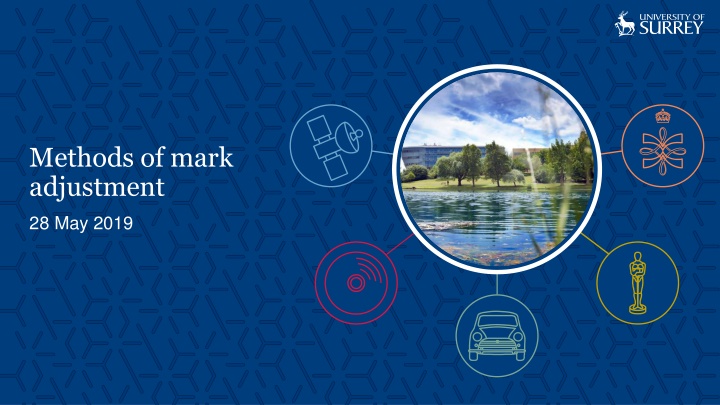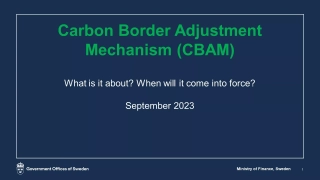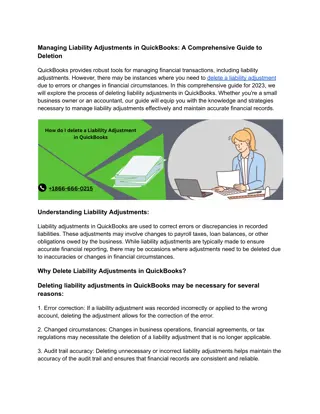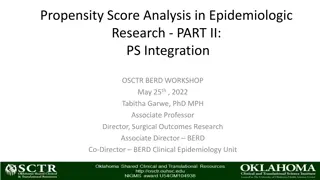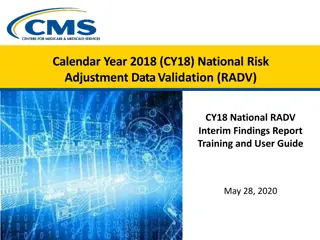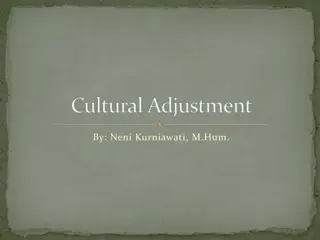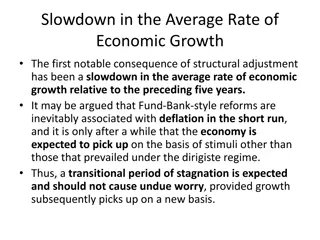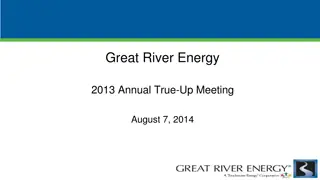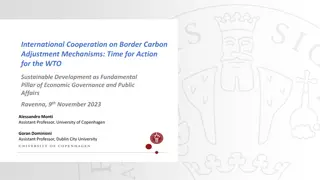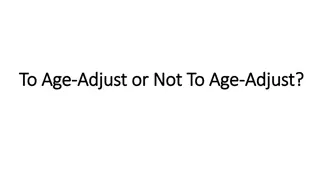Methods of Mark Adjustment in Educational Assessment
In educational assessment, methods like Z-score normalization, quadratic scaling, and piecewise linear scaling are used to adjust marks based on Gaussian distribution assumptions. Z-score normalization helps to adjust both mean and standard deviation, impacting the distribution of marks. Quadratic scaling allows for adjusting marks by setting desired values, either increasing or reducing, with candidates falling on the line of equality before adjustments. These methods aim to fine-tune marks to better reflect the performance of cohorts in assessment modules.
Download Presentation

Please find below an Image/Link to download the presentation.
The content on the website is provided AS IS for your information and personal use only. It may not be sold, licensed, or shared on other websites without obtaining consent from the author.If you encounter any issues during the download, it is possible that the publisher has removed the file from their server.
You are allowed to download the files provided on this website for personal or commercial use, subject to the condition that they are used lawfully. All files are the property of their respective owners.
The content on the website is provided AS IS for your information and personal use only. It may not be sold, licensed, or shared on other websites without obtaining consent from the author.
E N D
Presentation Transcript
Methods of mark adjustment 28 May 2019
Methods of mark adjustment Z-score normalisation Quadratic scaling Piecewise linear scaling #uniofsurrey 2
Z-score Based on the assumption that the marks obtained by a cohort in a module or unit of assessment broadly follows a normal or Gaussian distribution. ps://en.wikipedia.org/wiki/Normal_distribution #uniofsurrey 3
Z-score With z-score normalisation one can Frequency Mark #uniofsurrey 4
Z-score increase the mean Frequency Mark #uniofsurrey 5
Z-score .reduce the mean Frequency Mark #uniofsurrey 6
Z-score Or alternatively one can Frequency Mark #uniofsurrey 7
Z-score reduce the standard deviation Frequency Mark #uniofsurrey 8
Z-score or increase the standard deviation Frequency Mark #uniofsurrey 9
Z-score One can adjust both the mean and standard deviation, as in this example: Frequency Note how the lowest marks have increased dramatically: Mark #uniofsurrey 10
Quadratic scaling Before any adjustment, all candidates fall on the line of equality (A=R): A = R Adjusted mark Raw mark #uniofsurrey 11
Quadratic scaling Pick an Actual point A = R Adjusted mark Raw mark #uniofsurrey 12
Quadratic scaling and set its Desired value, which can be an increase or (as shown here) a reduction: A = R Adjusted mark Raw mark #uniofsurrey 13
Quadratic scaling A curve is then fitted that goes through the Desired point and the end points (0% , 100%) A = R Adjusted mark The end points are preserved (anyone on 0% or 100% stays there). The biggest adjustment is felt in the middle of the distribution. Raw mark #uniofsurrey 14
Quadratic scaling This is what an upward adjustment might look like .. A = R Adjusted mark The end points are preserved (anyone on 0% or 100% stays there). The biggest adjustment is felt in the middle of the distribution. Raw mark #uniofsurrey 15
Piecewise linear scaling This method allows adjustment to be carried out in different parts of the mark distribution A = R Adjusted mark Raw mark #uniofsurrey 16
Piecewise linear scaling Establish scaling points at normal boundaries (e.g. Pass, Merit, and Distinction at Level 7): A = R Adjusted mark P M D Raw mark #uniofsurrey 17
Piecewise linear scaling Adjust one or more points up or down in value (e.g. move Pass to 40%): A = R Adjusted mark P M D Raw mark #uniofsurrey 18
Piecewise linear scaling Kink the line of equality to pass through the new point (or points, if more than one adjusted): A = R Adjusted mark P M D Raw mark #uniofsurrey 19
Piecewise linear scaling Note that P, M, D are in the original locations (e.g. 50, 60 and 70) on the Adjusted scale: A = R Adjusted mark D M P P M D Raw mark #uniofsurrey 20
Piecewise linear scaling Here is another example in which Distinction is moved to 80%: A = R Adjusted mark P M D Raw mark #uniofsurrey 21
Piecewise linear scaling Again, kink the line of equality to pass through the new point: A = R Adjusted mark P M D Raw mark #uniofsurrey 22
Piecewise linear scaling Again, note that P, M, D are in the original locations (e.g. 50, 60 and 70) on the Adjusted scale A = R Adjusted mark D M P P M D Raw mark #uniofsurrey 23
Piecewise linear scaling For Levels 4-6, four scaling points are required, at Pass, Lower 2nd, Upper 2nd and First: A = R Adjusted mark P L U F Raw mark #uniofsurrey 24
